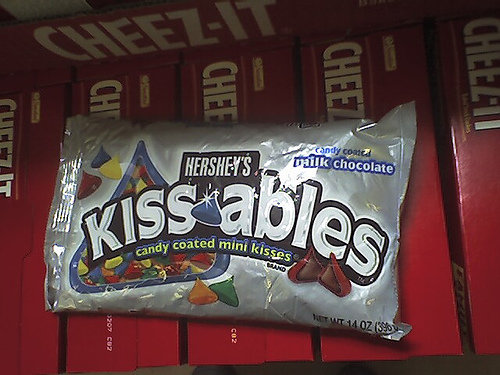Saturday was “new keitai day” for our family, and we all went down to the local “au” store to get new mobile phones (keitai, in Japanese). As usual, the pace of technology in Japan is very fast, and even though it’s been just a year since I got my last phone, there had been two complete generations of new models introduced in the interim. The new crop of phones included features like “Wanseg” digital TV viewing with a screen that can rotate horizontally, a phone with a physical switch to go from “business” to “personal” mode, and the football helmet-tough Casio’s G’z One, made for people who drop their phones a lot (like me). As usual, Japanese phone manufacturers are all about style, and each of the phones had a unique, fresh approach to appeal to a different segment of phone buyers, with several phones specifically touting their simple “Friendly Design(tm).” All the phones we looked at had features such as GPS “Safety Navigation” (so we can find missing family members), extra-large text for older users, music capabilities, cameras, and a virtual “Hello Message!” room where you and your friends can chat with each other, with each person represented by a different animal. While it was nice to have some cool phones to choose from, there are almost no “smart” phones like the Treo or Blackberry here, since kana can be entered quickly with a ten-key pad and Japanese consumers presumably find phones with QWERTY keyboards to be ugly.
Because names in Japanese are written in kanji, they have meanings that are mysterious to foreigners. Western names have meanings, too — my name, Peter, comes from “rock” in Greek, and “Payne” supposedly comes from the French “pain” (bread), similar to the English last name Baker. Some characters used in many Japanese last names include:
Yama = Mountain 山
Ta (or da) = Rice field 田
Naka = Middle 中
Matsu = Pine 松
Kawa (or gawa) = River 川
Kon (or Kane) = Gold (usually indicates Korean ancestry, e.g. Kim) 金
Gaijin are also interested in learning how to write their own names in kanji, too. While foreign names are most properly written in the katakana syllabary system, it’s possible to “force” a non-Japanese name into kanji. For example, someone named George can choose two characters with the readings of “jo” and “ji” (like, 条寺 just to throw something out) Similarly, you could translate the name into similar kanji, for example choose characters for “lock” and “tree” if your last name was Lockwood. I wanted to write my name in kanji, but there are no characters that are read “pe” or “pi,” so I broke the rules, putting a circle next to other kanji to change the pronounciations (which is quite silly, trust me). I accidentally registered that bizarre, 6-character name with our local city office, and now my wife groans every time she has to explain why her American husband has such a bizarre name in kanji…
Pluto’s demotion from planetary status is causing quite a lot of discussion across the Internet, and in Japan, too. On one show I happened to be watching, a panel of experts was talking about the fate of our ninth planet, each giving various opinions on the subject. “But what about the Gamilons?” one of them asked. In the 1979 anime show Space Cruiser Yamato (Star Blazers in English), a race of aliens called the Gamilons establishes a base on Pluto and uses it to send radioactive planet bombs to Earth, and it’s up to the Yamato to destroy the base and the deadly Reflex Gun. There was a lot of tongue-in-cheek discussion about how the change in Pluto’s status might affect the Gamilons’ plans for attacking the Earth now that Pluto wasn’t a “real” planet anymore.





















